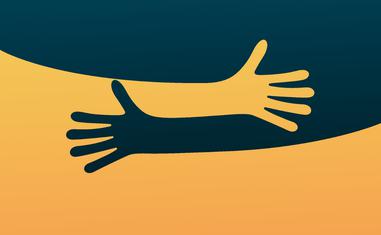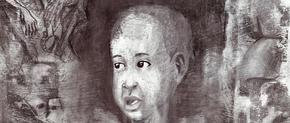The views expressed in our content reflect individual perspectives and do not represent the authoritative views of the Baha'i Faith.
The word amity means “friendship,” and the idea that amity is “found at the core of all advances for access, equity, and social justice” is central to the Baha’i teachings on achieving ideal race relations:
Know ye, verily, that the happiness of mankind lieth in the unity and the harmony of the human race, and that spiritual and material developments are conditioned upon love and amity among all men.
When Abdu’l-Baha wrote that sentence, the United States was in the grip of a vicious racial philosophy that suppressed and oppressed people of color at every level of society. Abdu’l-Baha, the son and successor of Baha’u’llah and the head of the Baha’i Faith after his passing, repeatedly told the American Baha’is that they needed to address and eliminate those racist attitudes among themselves and their fellow countrymen.
RELATED: Facing Our Nation’s Racial Past to Move Forward
The Baha’i philosopher Alain Locke noted that “attitudes are the flesh and blood of democracy”:
Constitutional guarantees, legal and civil rights, political machinery of democratic action and control are, of course, the skeleton foundation of democracy, but you and I know that attitudes are the flesh and blood of democracy, and that without their vital reinforcement democracy is really moribund or dead. That is my reason for thinking that in any democracy, ours included, the crucial issue, the test touchstone of democracy is minority status, minority protection, minority rights.
The printed program for the very first 1921 “Convention for Amity Between the Colored and White Races Based on Heavenly Teachings” featured, in part, short aphorisms by Jesus Christ, “Baha’o’llah” [an early spelling of Baha’u’llah, the prophet and founder of the Baha’i Faith], Lao-tze, Epictetus, Zoroaster, and Moses. The classical references may well have been the result of Alain Locke’s influence in his role as consultant.
As to the sessions themselves, an unpublished report, “A Compilation on the Story of the Convention for Amity,” dated May 31, 1921, provides many valuable details about the behind-the-scenes planning and execution of that progressive program. It contains Louis Gregory’s report of Locke’s role as a session chair and its keynoter:
Friday evening[:] Dr. Alain L. Locke, professor at Howard University, presided. He expressed the great spirit of the convention as the unity of the heart and mind in human uplift.
The local press covered all five sessions in three published reports, one for each day of the conference. In its story of the evening session that took place on Friday, May 20, a reporter for The Hadleigh wrote: “At the evening session Dr. A. L. Locke of Howard University was the chairman. A refined, cultured, discriminating gentleman of knowledge, presiding with the utmost grace.”
The two lectures that were presented during Dr. Locke’s session were: (1) “Duties and Responsibilities of Citizenship” by Hon. Martin B. Madden; and (2) “The New Internationalism and Its Spiritual Factors” by Alfred Martin, president of the Ethical Culture Society. Madden said that anti-lynching legislation was slated for the next session of Congress, that Congress definitely would enact it, and that the President would sign it into law. Martin struck linkages between the brotherhood of man and world democracy. Although the reporter is not named, this valuable press coverage was due to the efforts of Martha Root, assisted by Louis Gregory and Neval Thomas.
The conference was a great success. Beyond the trenchant addresses given by the speakers, it featured a rich artistic program, both musical and literary. Among the musical performers was solo violinist Joseph Douglass, grandson of the great abolitionist, Frederick Douglass. The Howard University chorus performed as well. Coralie Franklin Cook, the chair of Oratory at Howard University, gave a presentation on “Negro Poets” included readings of poems by Phyllis Wheatley, Paul Lawrence Dunbar, William Stanley Braithwaite, Jessie Faucet, and others. According to author Gayle Morrison, Coralie Cook had “represented the Baha’i Faith among black intellectuals in Washington, D.C. since about 1910.” Her husband, George William Cook, was a professor at Howard University as well.
Gwendolyn Etter-Lewis suggests that the Cooks learned about the Baha’i Faith as early as 1910, through Joseph and Pauline Hannen in Washington, D.C., and became Baha’is around 1913. However, Louis Gregory, in his typescript history of the early Washington Baha’i community, states: “The husbands of these two ladies [Coralie Franklin Cook and Harriet Gibbs Marshall], the late Prof. Geo. W. Cook and the late Capt. N. B. Marshall, although never formally declaring themselves believers, gave valued cooperation to the friends [Baha’is] in efforts to spread the Faith.” Locke, in his obituary of George Cook, writes in a similar vein: “But with all the conservatism of his mind, he was yet able to embrace whatever new truth seemed to him a logical extension of fundamental principles. On many occasions he expressed with earnestness and enthusiasm his appreciation of the great principles enunciated by Baha’u’llah for the perfecting of the human race, and unhesitatingly offered his home for Baha’i meetings.”
The convention attracted large crowds of fifteen hundred or more. “An interesting aftereffect of the first amity convention,” Louis Gregory observed, “was the stimulus it gave to orthodox people [established churches and other religious groups], who started the organization of interracial committees very soon thereafter.”
Apart from this development, the convention was hailed as a success, meeting its goal to foster good will rather than achieve any specific concrete objectives. Within the Baha’i community, however, the first Amity Convention was truly the “mother” of all future Baha’i-sponsored race initiatives.
Retrospectively, in its 1929–1930 annual report, the nine-member Interracial Amity Committee, of which Locke was an active participant, reaffirmed the significance of the first Amity Convention and concluded: “There can be found in America today no more effective teaching, no stronger magnet to attract souls.”
RELATED: World Brotherhood — and Dr. King’s Most Controversial Speech
Abdu’l-Baha considered this meeting to have had paramount symbolic and social importance. In a message brought to America by Mountfort Mills, a Baha’i who conveyed the oral message upon his return from a visit to Palestine, Abdu’l-Baha was reported to have said:
Say to this convention that never since the beginning of time has a convention of more importance been held. This convention stands for the oneness of humanity. It will become the cause of the removal of hostilities between the races. It will become the cause of the enlightenment of America. It will, if wisely managed and continued, check the deadly struggle between these races, which otherwise will inevitably break out.
When the convention ended, Agnes Parsons cabled Abdu’l-Baha: “Convention successful. Meetings crowded. Hearts comforted.” To which Abdu’l-Baha cabled back: “The white colored Convention produced happiness. Hoping will establish same in all America.” In one of several tablets to her regarding the convention, Abdu’l-Baha subsequently praised Agnes Parsons as “the first person to raise the banner of the unity of the white and the colored”:
The Convention, comprising the white and the colored, which thou hadst organized, was like the Mother, from which in near future many other meetings shall be born. But thou wert the founder of this Convention. The importance of every principle is at the beginning, and the first person to raise the banner of the unity of the white and the colored, wert thou. It is certain that it shall bear great results.
In another letter to Parsons, Abdu’l-Baha wrote:
The Convention of the colored and the white was in reality a great work. Because if the question of the colored and the white should not be solved, it would be productive of great dangers in future for America. Therefore the Confirmations of the Kingdom of Abha shall constantly reach any person who strives after the conciliation of the colored and the white. Thank thou God that thou art the first person who established a Race Convention.
The 1921 “Convention for Amity Between the Colored and White Races Based on Heavenly Teachings” was a landmark event that proved to be a milestone in Baha’i social history. It was the progenitor of all future race amity conferences, and one of the earliest inspirations for America’s mass movement for civil and human rights.

















Comments
Sign in or create an account
Continue with Facebookor